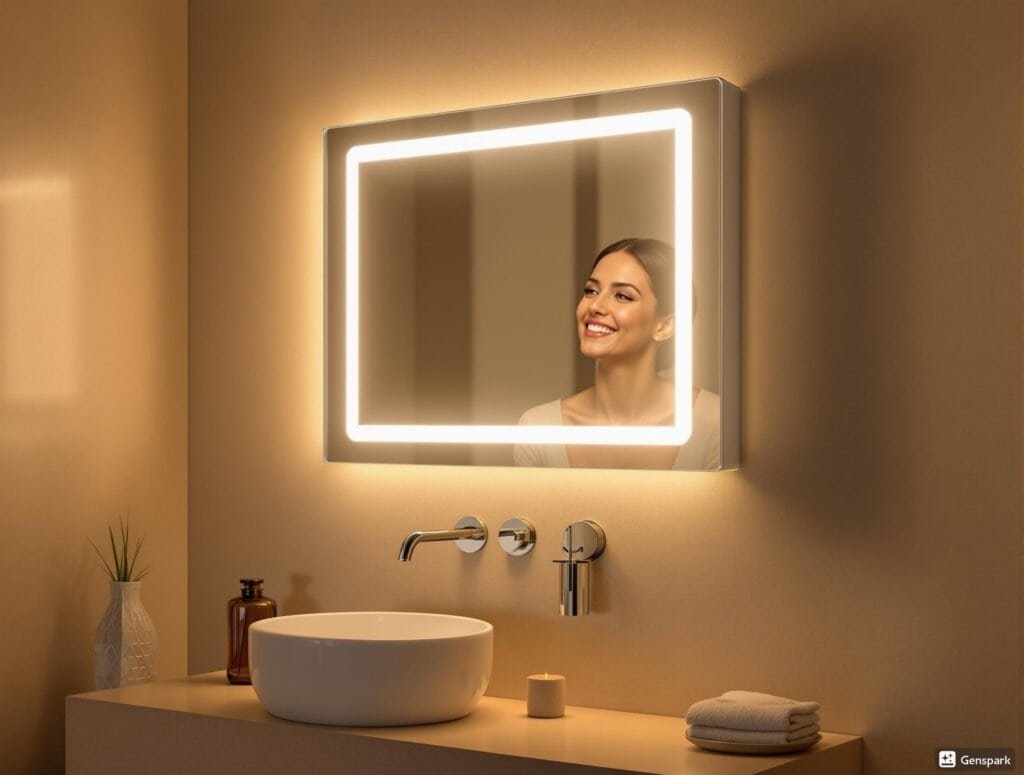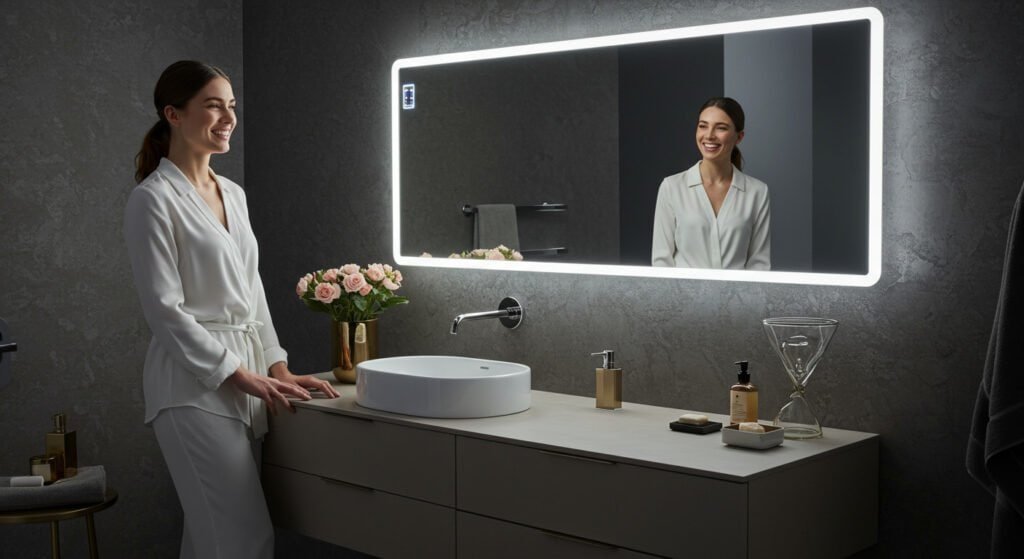|
Getting your Trinity Audio player ready...
|
Puzzled by the wide price variations when shopping for mirrors? With costs ranging from economical glass options to premium LED designs, determining a fair price of mirror per square foot price can feel overwhelming.
Standard glass mirrors typically cost $10-$25 per square foot, while specialized LED mirrors range from $25-$100+ per square foot. Key factors affecting pricing include glass quality, thickness, edge finishing, special features (defoggers, lighting options), and customization requirements.
Continue reading to discover comprehensive pricing information across different mirror types and installation scenarios to make an informed purchasing decision.
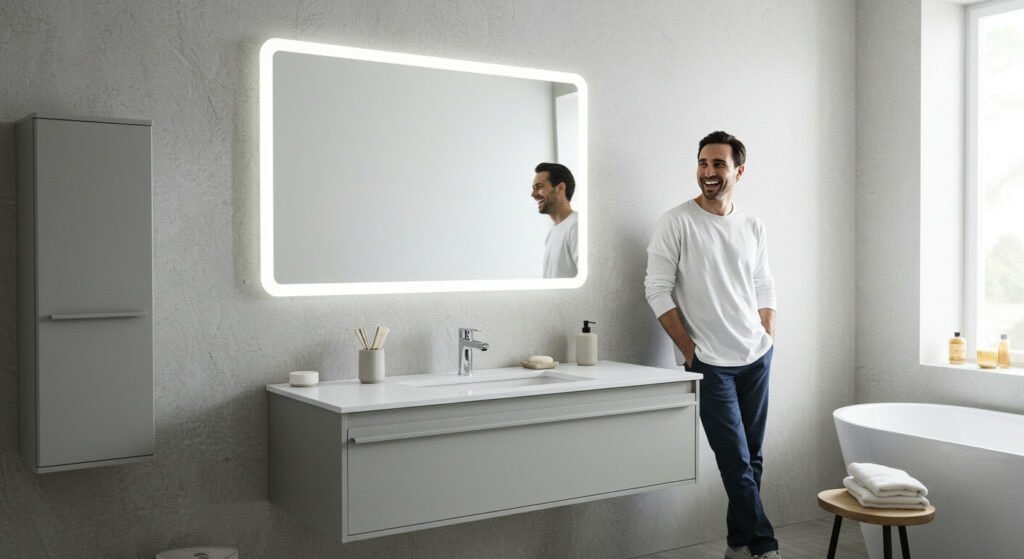
How Much Do Different Types of Mirrors Cost Per Square Foot?
Standard frameless glass mirrors cost $10-$15 per square foot, decorative framed mirrors range from $15-$40, basic lighted vanity mirrors start at $25-$50, while premium LED bathroom mirrors with multiple functions (defoggers, Bluetooth, temperature displays) typically range from $50-$100+ per square foot.
Basic glass mirrors are the most cost-effective option, costing around $7-15 per square foot and ideal for simple applications where complex features are not required. Framed mirrors typically cost $15-40 per square foot, with variations depending on frame material and design complexity. Wood mirror frames typically attract higher pricing due to material expenses and craftsmanship requirements.
The lighted mirror category shows the greatest price diversity. Basic lighted makeup mirrors start around $25-50 per square foot, providing essential illumination. Mid-range bathroom light mirrors with features like defoggers or magnification typically cost $50-75 per square foot.
High-end multipurpose illuminated mirrors with features like touch sensors, digital clocks, and Bluetooth speakers often cost $75 to $120 per square foot. These high-end models frequently have color temperature settings that can be adjusted, giving customers the option to choose between warm, neutral, and cool lighting. This function is especially useful in bathrooms.
How Much Does a Bathroom Mirror Cost Per Square Foot?
One of the most popular mirror purchases for both business and residential properties is a bathroom mirror.
Modern lit mirrors for bathrooms start at $30 and can cost up to $100 per square foot, depending on technology integration. Standard solutions for bathroom mirrors normally cost between $15 and $35 per square foot. Final costs are greatly influenced by size, functionality, and installation requirements.
Standard bathroom mirrors without illumination is between $15 and $20 per square foot. However, costs significantly rise when taking into account bathroom vanity mirrors with built-in lighting. While high-end models with several functions usually cost between $50 and $120 per square foot, basic LED bathroom mirrors start at about $30 to $45 per square foot.
The pricing difference reflects both aesthetic and functional advantages. Modern lighted mirrors for bathrooms provide superior illumination for grooming tasks, reduce shadows, and create an enhanced sense of space. Furthermore, a lot of modern bathroom mirror designs include useful elements like defoggers, which stop steam buildup and are especially useful in bathroom settings. Models with built-in Bluetooth speakers, digital clocks, and touch-sensitive controls are expensive but offer substantial everyday convenience and technological integration for people looking for mirrors with the most utility.
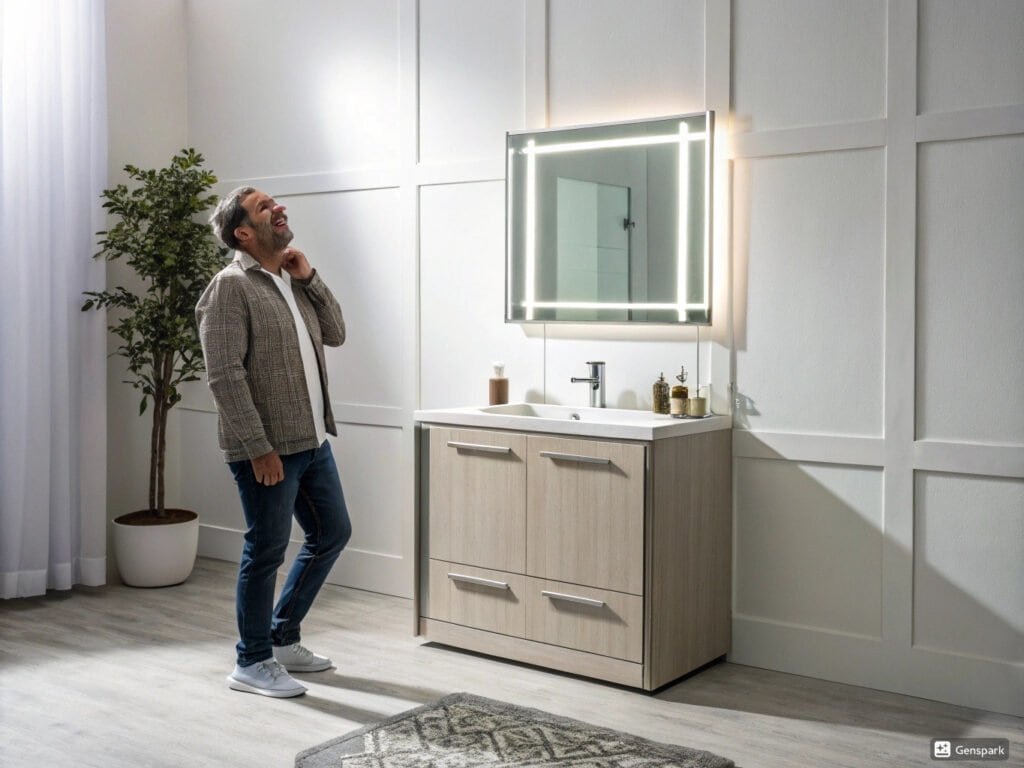
How Much Does a Full Length Mirror Cost Per Square Foot?
Because of its bigger size and particular installation needs, full length mirrors need special attention.
Full length mirror pricing typically ranges from $12-$20 per square foot for basic glass options, while LED full length mirrors with integrated lighting start at $35 per square foot. Due to their substantial size—often 5-6 feet in height—total costs frequently range from $150-$600+ depending on quality and features.
Full length mirrors present special production issues due to their bigger dimensions, which have an impact on cost. Depending on the specifications, standard full length mirrors without frames or illumination can cost anywhere from $12 to 18 per square foot, with total costs ranging from $150 to $300. Depending on the frame materials and design intricacy, framed choices should cost $18–30 per square foot, with total expenses ranging from $200 to 450.
LED full length mirrors represent a premium category, typically priced between $35-80 per square foot. These modernized versions offer significant advantages including improved visibility, enhanced room ambiance, and fashion-forward design. These mirrors have both decorative and practical uses in household settings. Full-length light-up vanity mirror installations provide useful illumination and a striking visual impact in commercial spaces like hotels or boutiques. Given their size and technological integration, high-quality LED full-length mirrors usually cost between $350 and $800 in total.
How Much Does a Frameless Mirror Cost?
Frameless mirrors provide modern style, but there are particular costs associated with mounting specifications and edge polishing.
While frameless LED bathroom mirrors start at $30 and can cost over $90 per square foot, frameless mirrors with normal glass alternatives usually cost between $10 and $25 per square foot. The quality of edge treatment has a big influence on both appearance and cost.
One important component of frameless mirror cost is edge finishing. Mirror costs usually increase by $3 to $5 per linear foot for basic polished edges. Beveled edges, wave patterns, and artistic finishes are examples of more intricate edge treatments that can cost $7 to $15+ per linear foot. These finishing methods have an impact on durability and safety features in addition to appearance.
Mounting systems are still another important expense. The cost of basic mounting clips usually increases between $20 to $50. The cost of more complex mounting solutions, such as Z-bars, French cleats, or special adhesive systems for larger mirrors, can increase by $50 to $150. To ascertain genuine value when evaluating frameless mirror options near various merchants, consider both mounting system quality and glass pricing per square foot.
When it comes to backlit mirror alternatives and frameless LED bathroom mirrors, edge illumination techniques affect both price and appearance. Although they offer various lighting qualities, edge-lit designs are usually 15–25% less expensive than completely backlit versions. Both the initial cost and long-term energy efficiency should be taken into account when assessing frameless LED solutions, since better LED systems usually use 30–50% less energy over the course of their operating life.
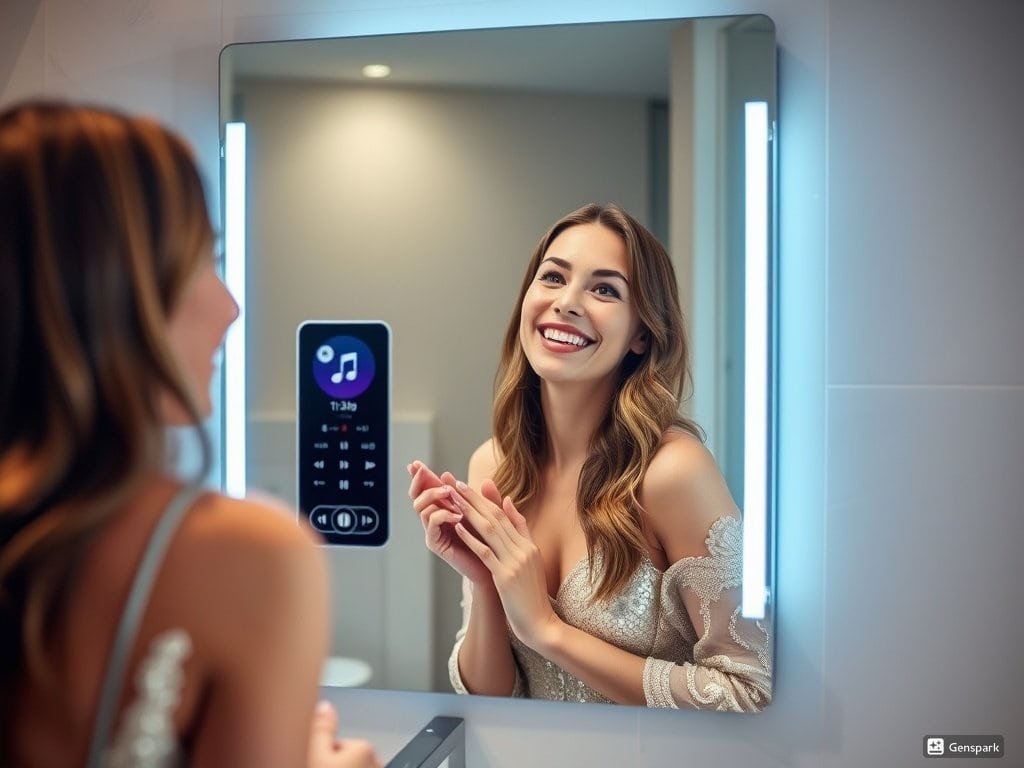
What Factors Affect Mirror Prices Per Square Foot?
Mirror pricing varies greatly depending on a number of important elements that every buyer should be aware of before making a purchase.
Glass quality, thickness (3-6mm), edge processing (beveled, polished, or raw), special features (LED lighting, defoggers), brand reputation, and degree of customization are the main factors affecting mirror cost per square foot. The base price may increase by 15% to 30% with premium coatings for increased durability.
| Mirror Category | Key Features | Price Range (USD / sq. ft.) |
|---|---|---|
| Standard Glass | • Basic glass with standard reflectivity | $10 – 15 |
| Premium Glass | • Superior clarity and enhanced reflective properties | $18 – 25 |
| Basic LED Mirror | • Integrated LED lighting; no extra smart features | $25 – 30 |
| Advanced LED Mirror | • LED lighting plus Bluetooth, defogger, digital display, customizable lighting | $50 – 100+ |
Another important cost consideration is the need for customization. Compared to specialist forms like ovals or circles or bespoke proportions, standard rectangular mirrors are far less expensive. A 20–40% premium over ordinary pricing is to be expected when exact specifications or unique designs are needed. The additional production complexity and specialized equipment required to create custom mirror solutions are reflected in this pricing differential.
How Much Do Mirrors Cost to Install?
Many purchasers first ignore installation, which accounts for a sizable portion of the overall cost of mirrors.
Professional mirror installation typically costs $150-$350 for standard mirrors, while specialized mounting for heavy or oversized mirrors ranges from $300-$500. LED mirror installation adds approximately $100-$200 due to electrical connection requirements. These costs vary based on mounting complexity and local labor rates.
The intricacy of installation has a major effect on overall expenses. Simple frameless mirrors installed on drywall usually cost $150 to $250 to install because they only need basic hardware and little work. However, because they require more work, specialist hardware, and maybe wall strengthening, mirrors that weigh more than fifty pounds or that require unique mounting solutions might cost between $300 and $500 to install.
Electrical issues add another level of difficulty to the installation of LED mirrors and other lit vanity mirrors in bathrooms. The cost of hiring a professional electrician to connect these mirrors to home electrical systems is usually between $80-150 per hour. Depending on their complexity, most installations take one to three hours to complete. Permits may also be needed in some areas for electrical upgrades, which might raise the overall cost by $50 to $150. These electrical installation costs should be included in the total investment calculation when setting aside money for contemporary illuminated bathroom mirrors.

How Much Does Wall Mirror Installation Cost?
The installation of wall mirrors entails particular factors that influence the total cost.
Installing a wall mirror usually costs between $150 and $400, depending on the mirror’s weight, dimensions, and mounting needs. Wall type (tile vs. drywall), mirror weight, the necessity for specialized mounting hardware, and accessibility issues are some of the variables that impact installation costs.
Depending on the weight and size of the mirror, installation costs can vary greatly. Professional installation of standard wall mirrors under 40 pounds usually costs between $150 and $250. However, larger wall mirrors that weigh more than fifty pounds and have lighting or ornate frames could need extra installers and specific mounting gear, which would raise the price to $300 to 450. Installation complexity is significantly impacted by wall material; tile or stone surfaces necessitate specific drilling tools and methods, which raises the usual installation costs by $75 to $150.
Another important cost element is location accessibility. Mirrors installed in difficult-to-reach regions or requiring specific equipment access generally attract 25-50% higher installation rates. Electrical connection requirements further complicate the installation of wall mirrors with lighting. The cost of hiring a professional electrician to connect these mirrors to home electrical systems is usually between $80-150 per hour. Give prospective contractors precise information about the mirror’s weight, size, and intended mounting location for accurate installation quotations.
How Much Does It Cost to Replace a Bathroom Mirror?
The costs of removal and installation associated with replacing an old bathroom mirror have an effect on the project’s total budget.
Bathroom mirror replacement typically costs $200-$450, including old mirror removal ($50-$100) and new mirror installation ($150-$350). When replacing standard mirrors with LED bathroom mirrors, additional electrical work may add $100-$200 to total costs.
The entire cost of replacement is greatly impacted by the removal procedure. Adhesive-mounted mirrors must be removed using certain methods to avoid damaging the wall or the mirror. Professional removal usually costs between $50 and $100, depending on the mounting technique and mirror size. Depending on the amount of the damage, improper removal may necessitate repairs, raising project expenses by $100 to $300.
Electrical needs are a major cost factor when replacing outdated bathroom mirrors with contemporary lit mirrors. Running new electrical lines usually increases project costs by $150 to $300 if there is no existing wire available close to the installation site. Furthermore, sophisticated LED bathroom mirrors can need particular switches or electrical connections that weren’t required for the prior installation. Both removal and installation costs should be taken into account for a thorough replacement budget, especially when switching between different types of mirrors.
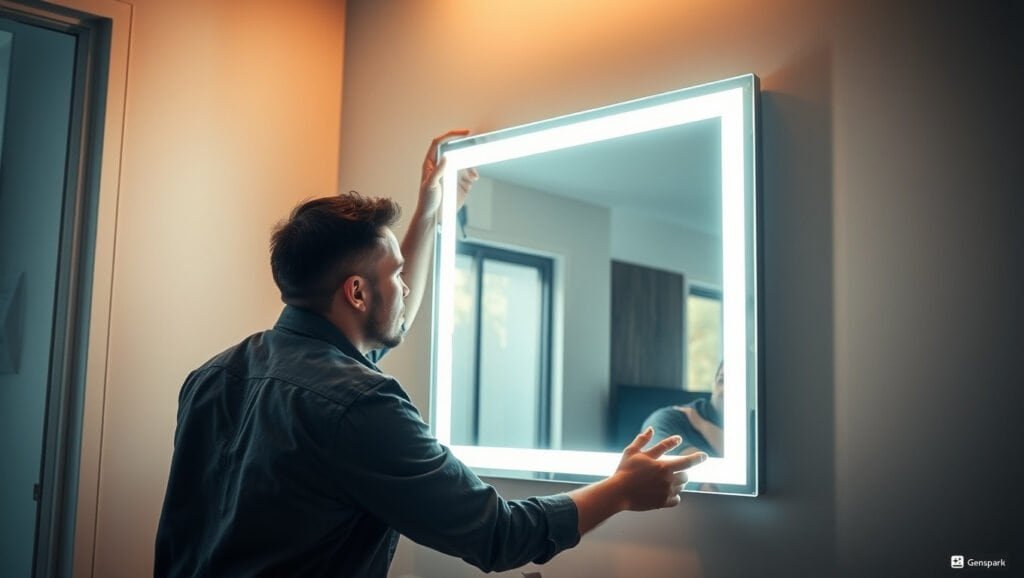
How Much Is a Custom Bathroom Mirror?
Custom bathroom mirrors are a high-end product category with unique features and specifications that affect price.
While custom LED bathroom mirrors start at $50 and can cost up to $120 per square foot, depending on technological integration, custom bathroom mirrors usually cost between $25 and $40 per square foot for basic customisation. Final pricing is greatly influenced by size, shape complexity, and unique features.
Pricing is significantly influenced by the degree of customization. Non-standard sizes that preserve the rectangular shape are known as basic dimensional customisation, and they usually increase the cost of regular mirrors by 15% to 30%. Pricing can rise by 40–100% when compared to conventional alternatives for more intricate customization, such as bespoke frame integration, specialist edge treatments, or distinctive shapes. For instance, because of their more complicated production, oval mirrors are usually 25–40% more expensive per square foot than rectangular mirrors.
Technology integration is a major cost consideration for LED bathroom mirrors and custom backlit mirrors. The cost of base mirrors usually increases by $25 to $50 per square foot for basic LED integration. Advanced features that can cost between $40 and $80 per square foot include color temperature control, dimmable lighting, anti-fog systems, and smart home networking. Giving detailed information about the intended technological integration when ordering custom LED bathroom mirrors ensures accurate pricing estimates. Depending on the order size, volume discounts usually lower per-unit expenses by 15–30% for developers and construction businesses who need many custom mirrors.
How Much Should a Good Mirror Cost?
Understanding quality indicators and realistic price expectations is necessary to determine proper mirror pricing.
While high-end mirrors with premium features ranging from $30 to more than $80 per square foot, a good quality mirror usually costs $15 to $25 per square foot for standard glass options. Glass clarity, thickness (4-6mm recommended), accurate edge processing, and uniform reflective coating are all signs of quality.
Superior clarity and no distortion or color shift in reflections are characteristics of high-quality mirrors. Standard, high-quality glass mirrors range in price from $15 to $25 per square foot, depending on thickness and edge polishing. The average cost of premium mirrors with improved clarity, superior edge processing, and specialty coatings is between $25 and $40 per square foot.
The evaluation of quality becomes more complicated when looking at possibilities for led light mirror vanity. Simple lighted vanity mirrors for bathrooms that cost between $35 and $50 per square foot usually use standard LED strips with 30,000–40,000 hours of limited durability and simple functionality.
High-grade light-up vanity mirrors that cost between $60 and $100 per square foot come with improved construction quality, dimming options, color temperature control, and an extended LED lifespan of 50,000+ hours. These high-end choices typically offer far longer operational lifespans, more equal illumination distribution, and improved energy economy. Take into account both short-term quality indicators and long-term durability expectations when assessing “good” mirror pricing.
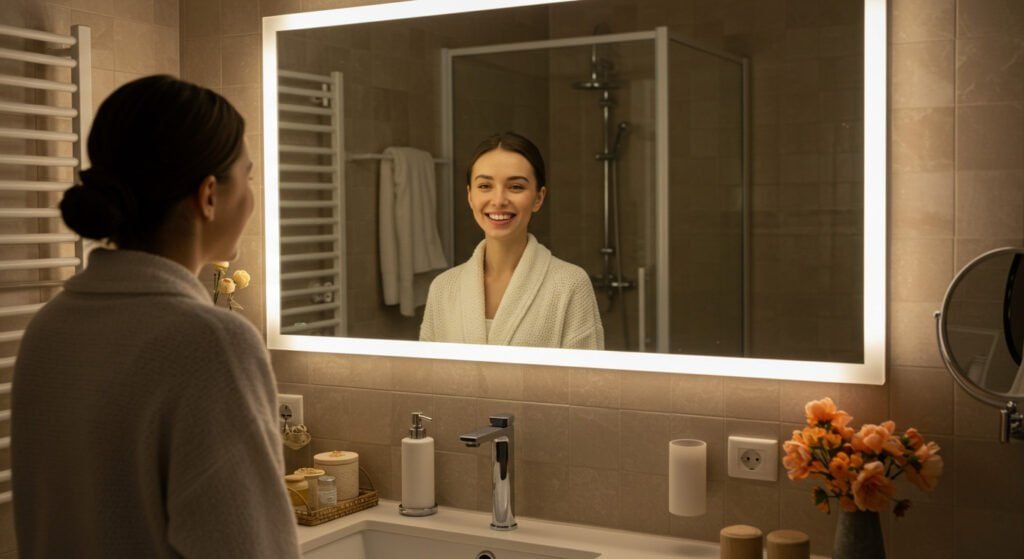
Why Are Mirrors So Expensive Now?
Recent spikes in mirror prices across a number of categories can be explained by an understanding of the state of the market.
Mirror prices have increased 15-35% since 2022 due to rising raw material costs (glass, aluminum, silver), increased transportation expenses, labor shortages in manufacturing sectors, and growing demand for technologically advanced mirror products. These factors have particularly impacted higher-end LED mirror products.
One important factor is the rise in the cost of raw materials. Significant energy inputs are needed to manufacture glass, and fluctuations in the price of energy around the world have a direct effect on production costs. Additionally, since 2021, the cost of aluminum frame materials has increased by 25–40%. Variations in commodity prices have increased the cost strain on reflective coatings made of silver.
The pressure on prices has been exacerbated by transportation issues. The price of imported mirrors has been greatly impacted by the 30–60% increase in international shipping expenses for glass products since 2021. Fuel price hikes and limitations in the logistics network have also increased the cost of domestic transportation. These elements have a distinct impact on large mirrors that need special care.
Due to shortages of semiconductors, the cost of LED bathroom mirrors and other technologically advanced products has increased. Global supply chain interruptions have resulted in 20–50% rises in the cost of the electronics components needed for contemporary illuminated bathroom mirrors. All of these elements work together to explain why prices are rising for customers in the mirror market, especially in specialized and premium categories.
Is Purchasing a Custom LED Mirror Worth the Investment?
When considering bathroom upgrades, many purchasers question whether premium LED mirrors justify their higher price point.
Custom LED mirrors typically deliver strong return on investment through enhanced functionality, bathroom ambiance improvement, and increased property value. The multi-function capabilities—including defoggers, adjustable lighting, Bluetooth connectivity, and smart features—provide daily convenience benefits that standard mirrors cannot match.
The investment value extends beyond mere aesthetics. With lifespans typically exceeding 50,000 hours of LED usage (approximately 13-15 years of normal use), quality LED bathroom mirrors offer exceptional longevity compared to standard alternatives that may require replacement due to edge deterioration or surface degradation. The energy efficiency of LED technology further enhances value proposition, with most modern lighted mirrors for bathrooms consuming 70-80% less electricity than traditional bathroom lighting solutions.
For commercial applications such as hotels or luxury apartment developments, lighted vanity mirrors for bathroom installation serve as distinctive design elements that enhance property perception while providing practical benefits. The customization flexibility—allowing precise size, shape, and feature selection—makes LED bathroom mirrors particularly valuable for projects with specific requirements or unique bathroom configurations. While initial investment exceeds standard alternatives, the combined benefits of energy efficiency, enhanced functionality, and superior aesthetics typically justify the premium pricing for discerning purchasers.
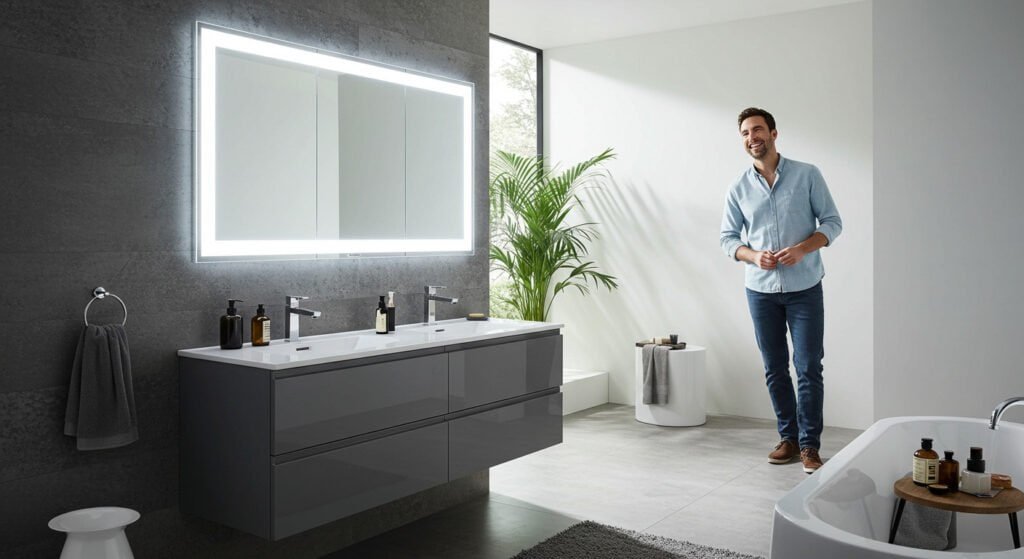
Where Can You Find the Best Mirror Prices?
Understanding each supply channel’s unique advantages is essential for navigating them and securing the best possible pricing.
Direct manufacturer purchasing (particularly from well-known exporters in manufacturing nations like China), bulk ordering for volume discounts, and cultivating connections with specialized mirror suppliers who can offer reliable quality and affordable prices are the most economical ways to procure mirrors.
Significant benefits result from direct manufacturing contacts, especially when collaborating with seasoned exporters. Businesses with more than 20 years of production experience usually retain competitive price structures and provide excellent quality control procedures. Manufacturers who specialize in LED mirrors in particular offer technical know-how that generic vendors might not have in regards to certification compliance, electrical specifications, and installation requirements.
Even when shipping and import taxes are taken into consideration, building companies and distributors looking to source wall mirrors with lights or bathroom vanity mirrors can cut prices by 30 to 50% by forming partnerships with reputable Chinese producers. Procuring precisely-sized products that meet project specifications without the extra pricing usually associated with non-standard dimensions in domestic markets is made possible by the customisation flexibility provided by dedicated manufacturers.
Give preference to providers who exhibit technical expertise, quality certification, prompt communication, and open logistics procedures when assessing possible suppliers. These elements have a big influence on the success of procurement, especially for technologically advanced goods like LED mirrors that need to be properly certified for global markets.
Conclusion
The cost of mirrors varies greatly depending on their type, quality, and features; basic glass mirrors range from $10 per square foot to more than $100 for premium LED choices. When choosing the ideal mirror, take into account your unique needs, quality standards, and long-term worth.
- To learn how to pick the right bathroom mirror click here.
- To learn how to install a mirror choose here.
- To learn how to pick the right size mirror click here.
- To learn how mirrors are made click here.
- Click here and you will learn why we look better in mirrors.
- Click here you will learn about the TOP 10 led mirror manufacturers for 2024.
- Click here to find out Why doesn’t my vanity mirror light come on?
- Find out How Tall Should Bathroom Mirror Be?Click Here
- Click here if you don’t know how to clean your mirror
- To find out how to fix Touch Sensor Mirror Not Working click here

